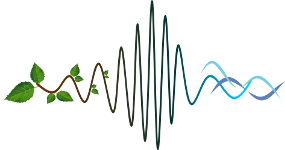Automatic bird species identification based on their song or call is one promising method for assessing biodiversity, but it requires improvement. Up to now, only four nitiatives in worldwide evaluation took place. The 1st was the ICML4B bird challenge [1] by univ. of Toulon within the framework of CNRS MASTODONS SABIOD (http://sabiod.org), with Musée National d'Histoire Naturelle of Paris. It concerned 35 species, and 76 teams participanted, 400 runs. The 2nd [2] had 15 species, 79 participants. The 3rd (UTLN+Biotope) got 80 species, 30 teams [3].
In collaboration with SABIOD, INRIA, TU and Xeno Canto, a new challenge opened in LifeClef 2014. It goes one step further by (i) significantly increasing the species number by almost an order of magnitude (ii) working on real-world social data contributed by hundreds of recordists (iii) moving to a more usage-driven and system-oriented benchmark by allowing the use of metadata and defining information retrieval oriented metrics [4]: 14k recordings, 501 species from Amazon forests. It is expected to be more challenging: high confusion risk between the classes, high background noise,high diversity in the acquisition conditions (devices, recordist customs...). It will probably produce substantially lower scores and a better progression margin towards building real-world generalist identification tools.
In this communication, we review the methods submitted to these challenges. We thank SABIOD MASTODON for [1,2] and partly to [4] with others detailed in:
[1] Glotin, Clark, LeCun,.., Sueur, 'Proc. of the 1st workshop Machine Learning for Bioacoustics', ICML, Atlanta, http://sabiod.org/,ISSN979-10-90821-02-6, june.2013
[2] Briggs, Raich et al.'The nith annual MLSP competition: Overview', Proc. IEEE MLSP workshop, sept.2013
[3] Glotin, LeCun, Artières, Mallat, et al., 'Proc. of Neural Information Processing Scaled for Bioacoustics: from Neurons to Big Data', NIPS, http://sabiod.org/nips4b, ISSN979-10-90821-04-0,dec.2013
[4] Joly, Muller, Goeau, Glotin, Spampinato, et al.,'LifeCLEF: Multimedia Life Species Identification',proc. EMR Workshop, april.2014
- Other

 PDF version
PDF version

